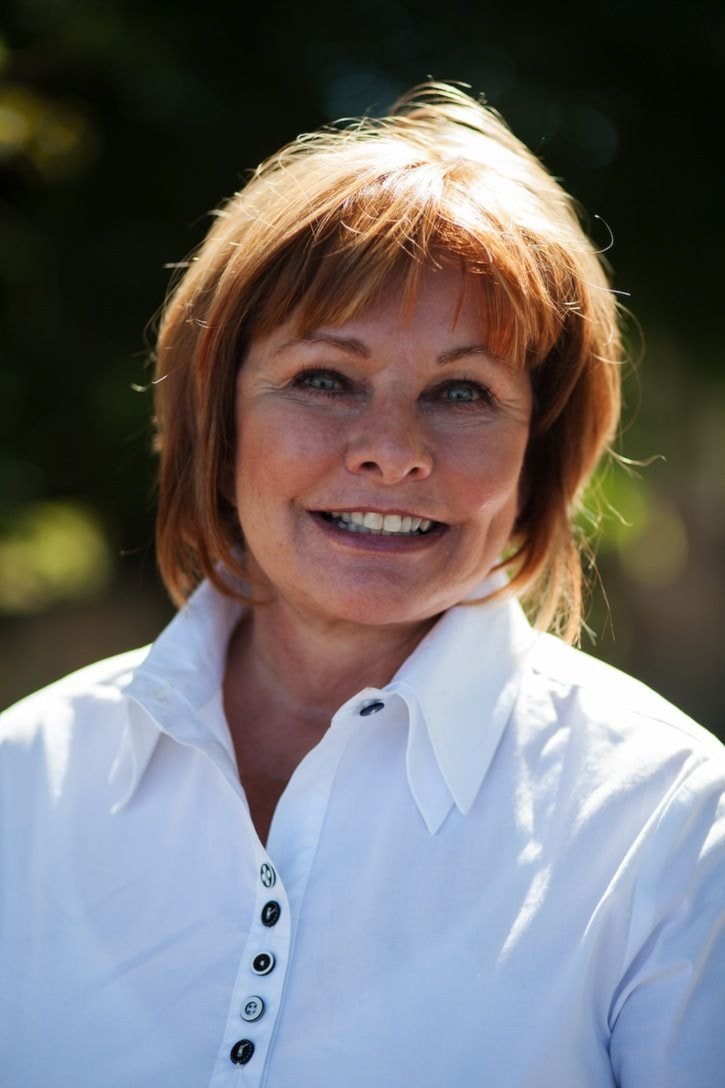Linda Hepner describes her age as old enough to know better and too young to resist.
"I was the middle child growing up and I'm the middle (mayoral) candidate for age," she says. "I'm in a comfortable place."
Her senior-most issue is public safety.
Surrey needs more police, Hepner believes, saying there has to be more preventative policing – rather than just scooping up criminals after they have committed a crime.
"We're being responsive, not preventative," Hepner says. There also needs to be a better focus on root causes of crime, such as mental illness and addictions, which tap into police resources, she adds.
And with no community court, people are being caught in the rotating door of the justice system.
She also wants to have locations where high-risk offenders live publicly identified by community (i.e. Newton, Guildford, etc.).
"It's locational mapping, but not identifying their homes," Hepner says, adding that would allow people to be on the alert.
"It's just a form of information I think belongs in the public arena," Hepner says, noting the system already exists in the United States.
Regarding the shortfall of police, she plans to hire 147 police officers over three years – 30 this year, 100 next year and 17 in 2016.
The costs will be $22 million over that time.
It will be largely paid for by revenue from growth ($8 million), funds from secondary suite fees ($13 million) and revenue from the Surrey City Development Corporation (SCDC) dividends ($4.5 million).
She says the bulk of the funding will come from new growth, which isn't required for other programs or projects, which are already budgeted for, she says.
Funds from secondary suites and SCDC is currently used elsewhere, but Hepner says depending on departmental priorities, funding for road maintenance, sidewalk construction or planned electronic signs could be used to make up the rest.
Hepner wants to move Whalley's Gateway Shelter and Front Room to the hospital district and push for a facility for a centre for mental health.
"It would be like a sophisticated Riverview," Hepner says, but adds it would be a much smaller scale than the Coquitlam property.
"We're not going to replicate Riverview," she says, adding she wishes the province hadn't closed it.
The facility she's looking for would be secure and would allow police to drop people off who needed help.
She doesn't yet know how much the facility would cost, or how much the city would contribute. It could involve Surrey donating land and the operational costs would need to be provided by a senior level of government.
Hepner also wants a specialized community court in Surrey, where people with mental health issues or addictions could be referred resources they need rather than jail.
She says B.C. Attorney General Suzanne Anton has suggested Surrey might have one next year.
"I would say spring, 2015. The AG's office is on track with that," Hepner says.
Transportation is second on Hepner's list of priorities, saying the city only has eight per cent of the region's rapid transit.
"We don't have the bus service either," she says. "I want my rail," referring to light rapid transit.
She defines it as the "L-Line" which would be at-grade rail connecting City Centre, Guildford and Newton. It would cost $2.2 billion.
Hepner is hoping an upcoming TransLink referendum results will direct the transit authority to pay for it.
Surrey has contributed $2.9 billion over the past 20 years to TransLink and it's not too much to ask for at-grade rail and better bus service, she says.
The third top issue Hepner wants to deal with is balanced growth and jobs.
In her time as manager of economic development with Surrey, she says there were 0.6 jobs per resident. It's now at 0.67, which she says is a good accomplishment given the city's growth in population.
But she wants to see the ratio climb to one job per resident. She'll get there by expanding on ideas such as Innovation Boulevard – the health sector hub between Surrey Memorial Hospital and SFU that aims to attract top-notch talent and investment to Surrey.
Hepner would use the same model on other sectors throughout the city, including agriculture and food security.
As an example, she says researchers are currently looking at growing brown rice in Surrey that can be planted and washed in Surrey's clean water.
"Brown rice could be grown in our pristine waters systems right here, and could we be a producer of significant product we could market right here," Hepner says.
The same could be done for manufacturing, she says.
The push would also be on for more commercial growth and protecting existing industrial land.
"It has value and we're going to protect it," she says.
